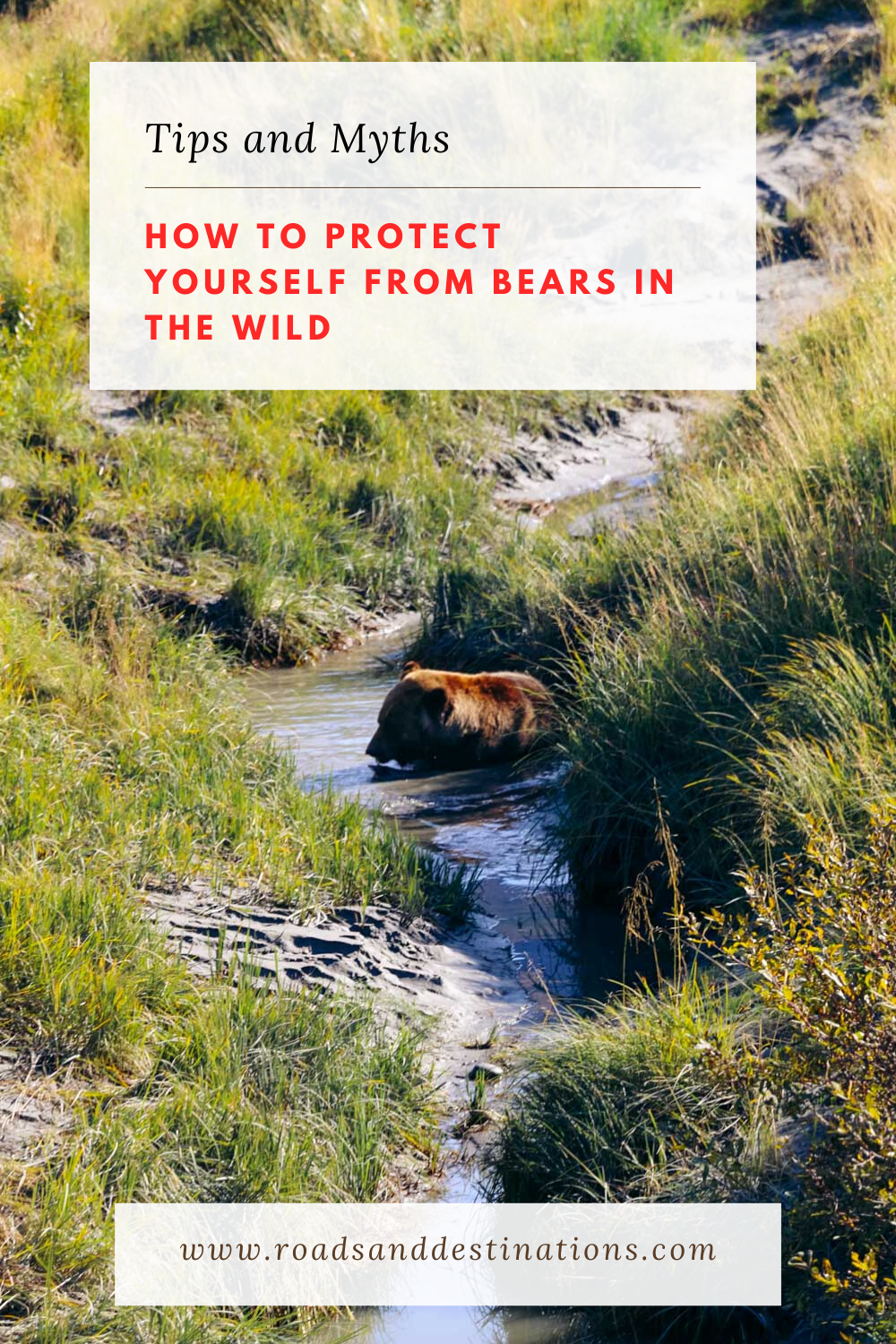We all dream of seeing a bear in the wild. However, only a few of us know how to actually protect ourselves from those wild beasts.
Last updated: June 15, 2025
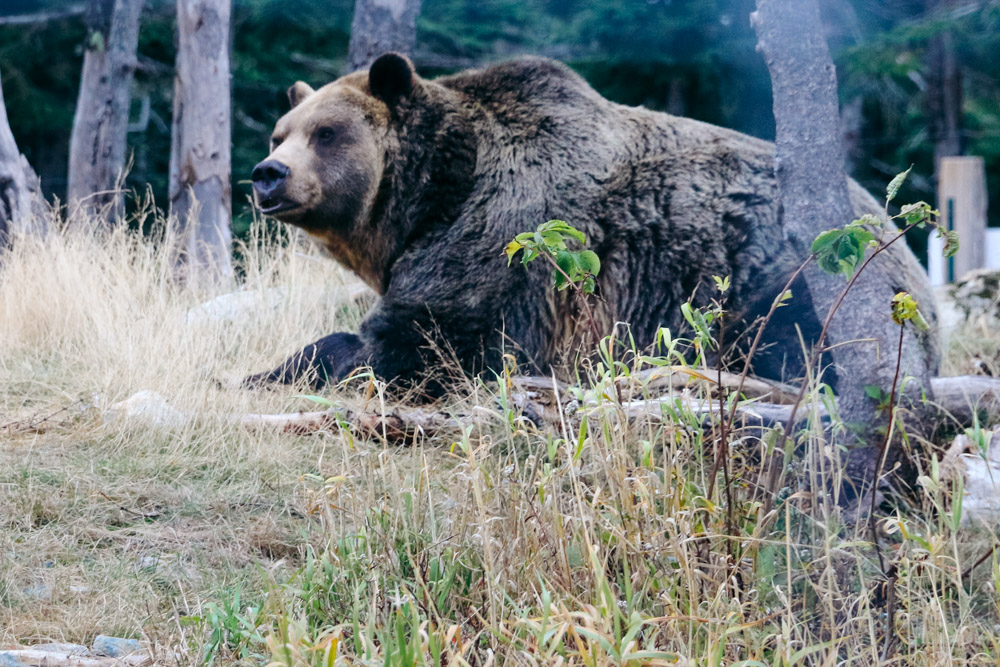
How to Protect Yourself from Bears in the Wilderness
“How do you protect yourself from bears?” I was startled. Did Roshan have to ask this question, while we were hiking in Glacier National Park, a place with the largest concentration of bears.
Protect yourself from the bears? Do we really need to worry about it?
Over the past few years, we traveled to such places as Alaska and Canada. At one point, we set off on a mission of chasing waterfalls in Yosemite National Park. Sequoia and Kings Canyon National Parks welcomed our nature-thirsty souls a few times. We even had the great pleasure of observing bison in Yellowstone National Park. Yet there were no bears in sight.
Neither black bears nor grizzlies were our ultimate goals during all of those travels. Truth be told, though, we always hoped to see these wild animals in their natural habitat. Yet since such a desiring encounter had never happened before, we hardly ever thought about how to protect ourselves from the bears in the wild.
Things Changed in Glacier National Park
Glacier National Park, home to the largest remaining population of the grizzlies, changed our travel game. The bears here don’t need to remind you who reign in the northwestern part of Montana.
Representing the species of different shades and sizes, these seemingly clumsy, but strong and fast animals pop up in the park when you least expect them. Thus, knowing how to protect yourself from the wild predators is non-negotiable here.
We spotted one bear right next to the Going-to-the-Sun Road while driving in East Glacier. As the car protected us from this cub and possibly his bear-mom, we felt safe. At that point, I didn’t give any thought of how dangerous the bears actually could be. Now, though, hiking in the wild and dangling an opportunity to spot a bear unnerved me.
Treading behind Roshan in the area that abounded with the wild animals (signage along the trail clearly pointed at it), I realized how irrational it was to venture into the wilderness without learning in advance what to do if you meet a fearsome bear.
Learned How to Protect Yourself from Bears in the Wild at Last...
As fate would have it, we didn’t encounter any bears on this particular hike in the Many Glacier area. This, however, didn’t stop me from finally doing my research and learning what to do and not to do to protect myself from the black and grizzly bears in the wilderness.
I’m still not an expert. But I’m certainly more prepared for a bear encounter now. Hiking without a deterrent, just like we did a month ago… It’s certainly not the best way to protect yourself from the bears in the wild to say the least.
Yet having a tool or device to spook the animal might not be enough to survive the bear attack. Take a look at these tips and myths on how to avoid the bears, what to do and not to do when you encounter them, and how to protect yourself in case the bears attack.
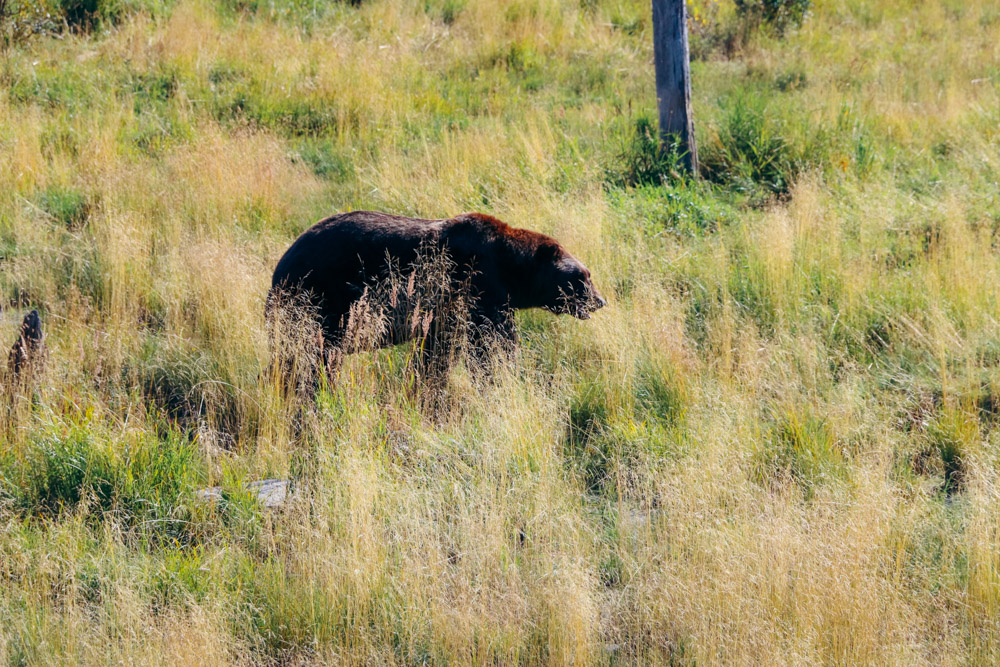
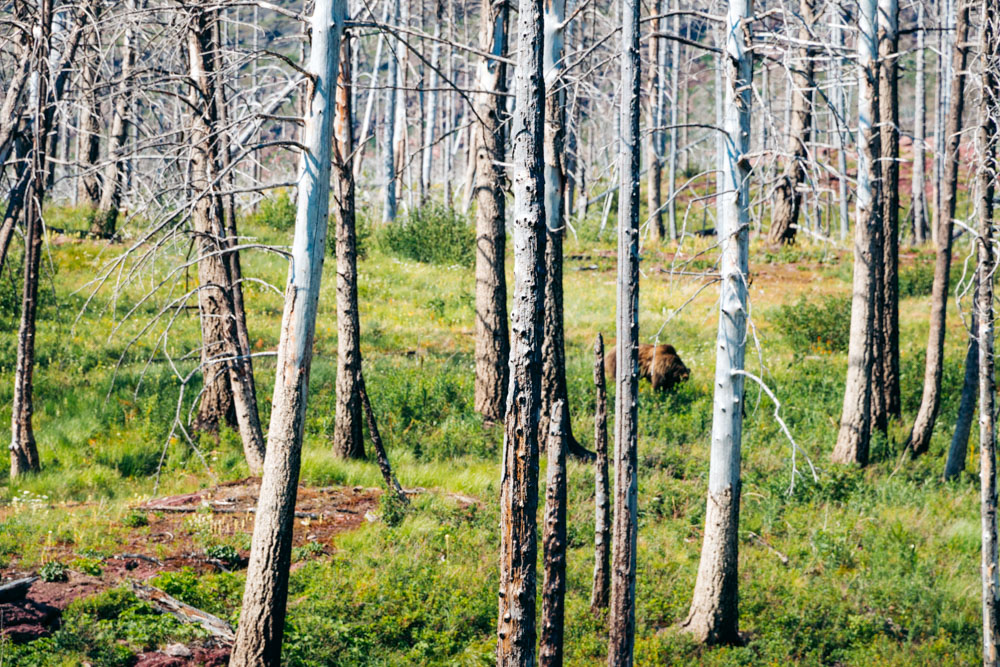
HOW TO PROTECT YOURSELF FROM BEARS: AVOID THE ANIMALS
1. Don’t Hike Alone – Bear Safety Rule #1
Hiking in groups is a sure way to stay safe and protect yourself from the bears in the wild. The animals usually assess their conditions. One grizzly or black bear has little chances in front of a group of people. In reality, the mammals can still attack a couple of hikers. In most cases, though, the bears won’t even try to show their strengths, preferring to stay safe far away from the potential danger.
One hiker or a spread out group, on the other hand, can be an easy target for the black bears or grizzlies. Therefore, stay safe, protect yourself and your group from the wild beasts by sticking closer to each other while hiking in bear country.
If your group is just you and your friend, spouse, or kid, check out any ranger-led hikes offered in the areas frequented by the bears. Furthermore, follow the bear safety rules and never trail run in the wild. You might tempt the bear to chase you. Again, keep calm. Protect yourself and your group from the bears as best as you can.
2. Make Noise
No bear runs toward danger. Loud talking or calling out signals that humans approach. Instead of running toward you, the bears will walk away to well… stay safe.
Thus, make a commitment to make your presence known. Clapp at regular intervals, keep talking, and even put small bells on your backpacks to steer away any bears. The latter tip has proved to be somewhat inefficient. Yet it’s better than nothing at all. This ringing sound can protect you from the wild bears before you even realize you are in danger.
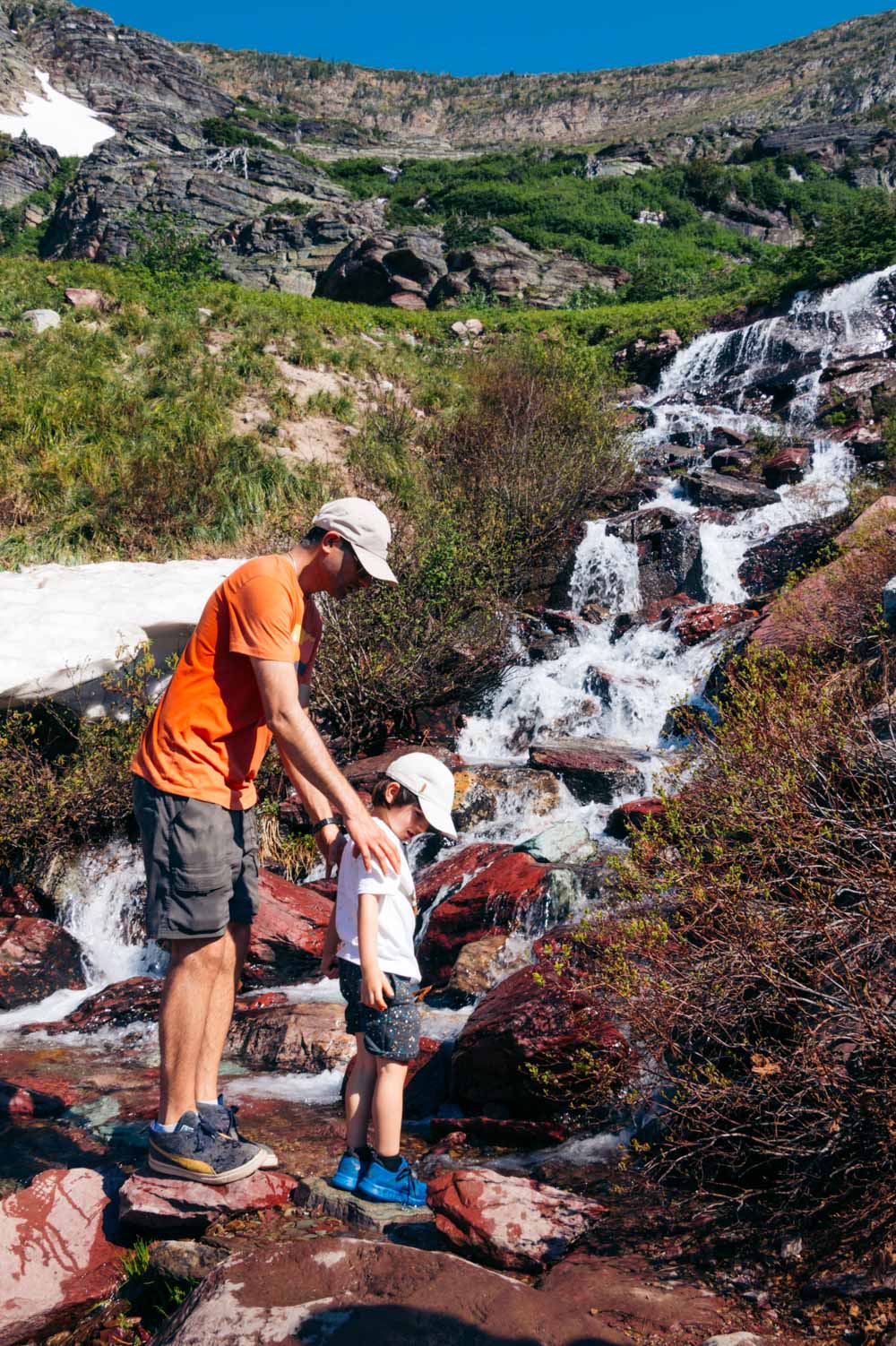
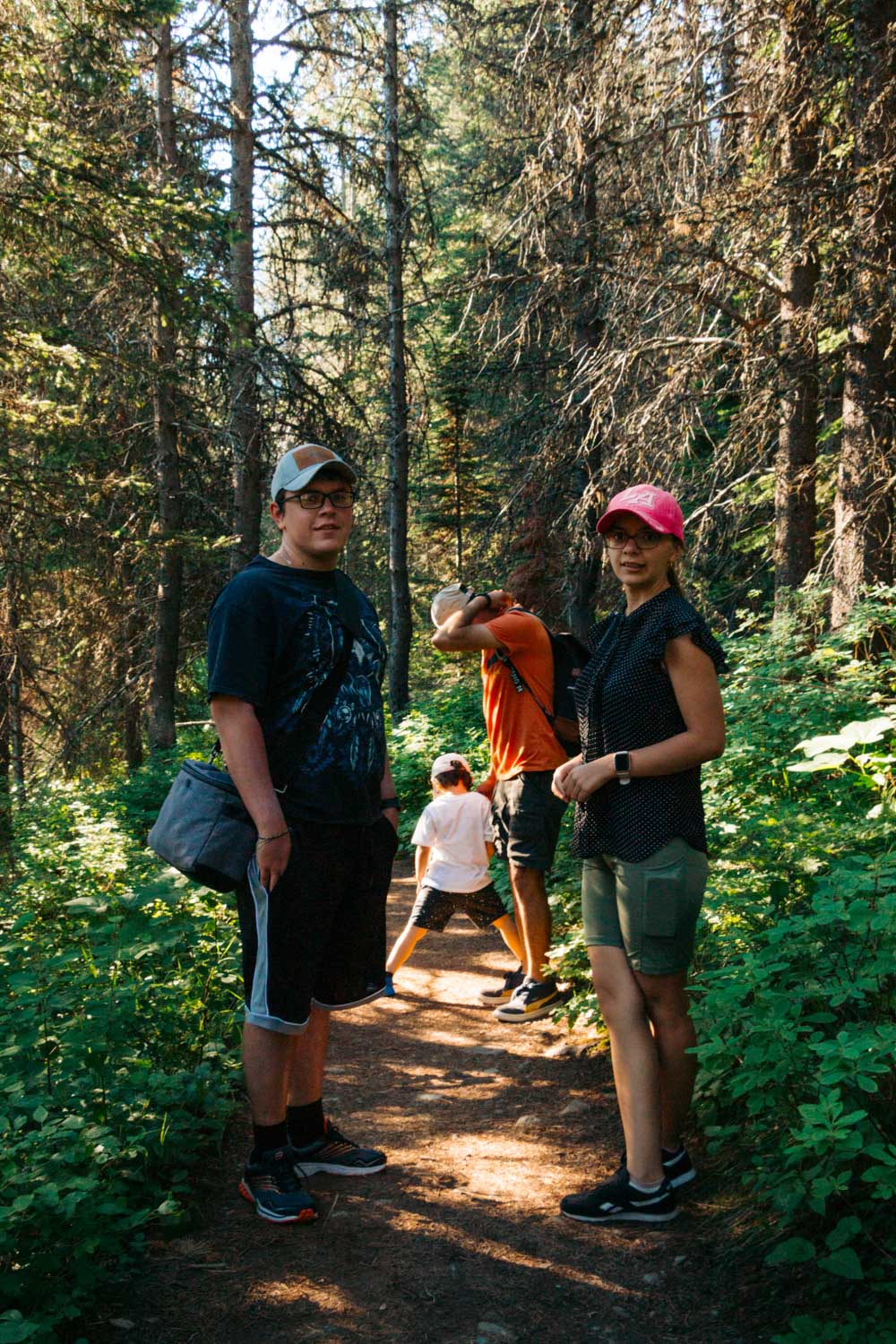
3. Keep Your Food out of Reach of Animals – the Surest Way to Protect Yourself from the Bears
Snacks replenish your energy on a long day hike in bear country. Food smell, however, is the strongest trigger for the beasts that might chase and even attack you. Be smarter and protect yourself by packing your lunches and snacks in bear-resistant canisters. These containers might be bulky and inconvenient, but work like magic and most importantly keep the bears away.
Similarly, never leave the food and any tools you use to prepare your meal unattended. Again, use the bear-resistant canisters even if the food is locked in your car. While backcountry hiking, hang the food up in a tree where the bears can’t reach it.
And always place your trash in bear-resistant garbage containers. If these are absent, pack your trash out. This protects not only you, but also some clumsy bears from getting used to human food and eventually being killed.
4. Don’t Use any Strong, Bear Enticing Fragrances
At one point, honey-milk shampoo was my favorite. It gave my hair that silky, shiny look and smelled divine. But I wouldn’t wash my hair with this yummy potion the night before hiking in bear country. Here the bears and I have something in common: we like honey.
I would probably share a barrel of this sweet liquid with the wild “brothers” by taste. But I certainly don’t want them to sniff at my head to figure out that it’s not honey after all.
The strategy to protect yourself from the bears in the woods is simple: avoid any bear enticing fragrances. This includes fruity facial creams, lotions, sprays, and deodorants. Talking about the deodorants, ditch them altogether or use unscented varieties to avoid any unwanted attention from the bear family.
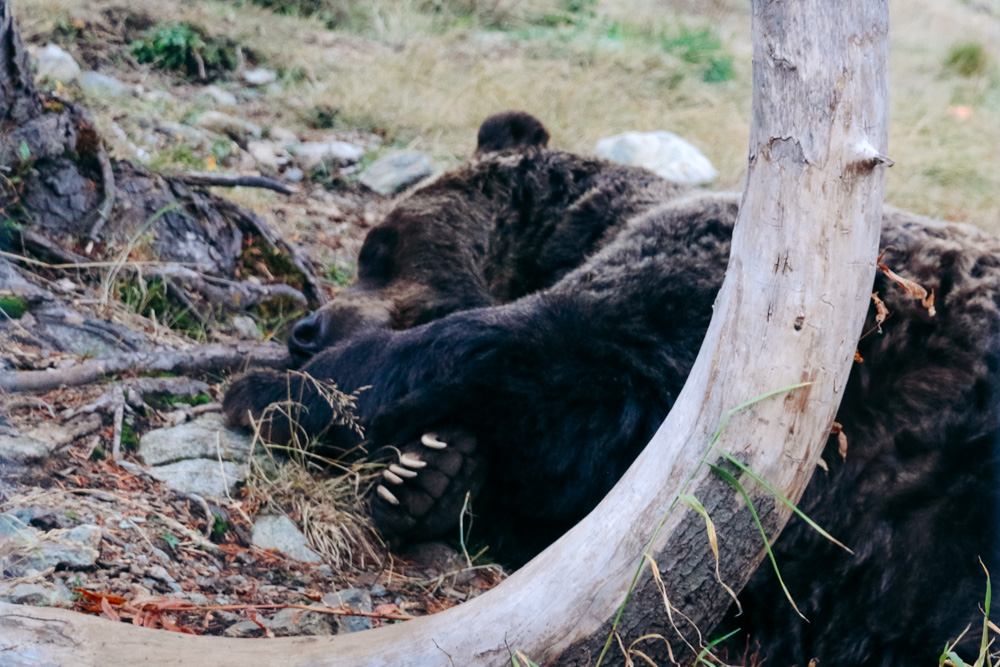
5. Camouflage to Protect Yourself from Bears
Let’s be honest, bright red or yellow jackets or tents look enticing for humans and animals alike. To protect yourself from the bears while hiking in the forest, it’s, however, the last thing you want to achieve.
Thus, stick to natural, neutral colors in your clothes and equipment. Yet if your tent happens to be brightly-colored, set it up in a place where the bears and other animals can’t spot you.
6. Leave Headphones/iPod in Your Car and Listen to Your Surroundings
Do you like listening to music while hiking? Well, it’s probably the last thing to do if you want to protect yourself and come back in one piece from the bear country. Be vigilant and listen to your surroundings.
Unlike the humans, the bears don’t need to roam in groups to jeopardize your safety plan. Even one animal can present a deadly threat. So never underestimate these wild animals and do whatever it takes to protect yourself from any surprises that might come from the wild bears.
7. Don’t Feed Bears
What do you mean by feeding a bear? Like what, putting a fish on your hand and luring the animal with it? No, this imaginary scene would be fun to see. In reality, though, you should never leave your food around to protect the bears (not you, this time around) from a deadly outcome.
There’s a saying, “A fed bear is a dead bear.” In other words, a bear that has eaten human food presents a danger to campgrounds, parking lots, or any other places where people can be found. The wild animals return to these areas to have another meal, creating an unsafe environment for outdoor adventurers. Consequently, bear attacks can happen.
Sadly in most cases, the bears that have acquired a taste for human food must be removed from any national parks or preserves to protect their visitors. Often these bears get killed during their next raid on the campgrounds.
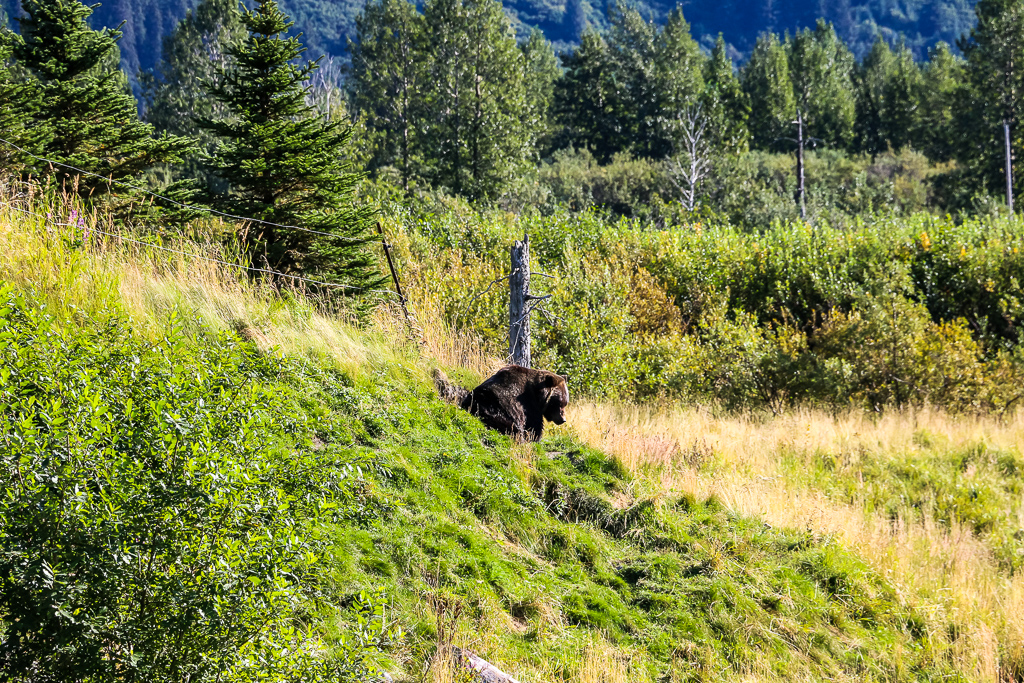
HOW TO PROTECT YOURSELF FROM BEARS: WHAT TO DO WHEN YOU ENCOUNTER WILD ANIMALS
8. Keep a Safe Distance
If you encounter a bear, always try to protect yourself by first keeping a safe distance. Normally, you shouldn’t approach any bears and wolves closer than 100 yards.
Moreover, don’t jump out of your car to get a closer look at the roaming nearby bear. Quite the opposite, keep driving when you see a bear standing right next to the road. Avoid disturbing the animals as much as possible while at the same time following necessary bear safety rules.
9. Grab Your Children at Once
Bears or no bears, always protect your children from any danger when in the wild. When spotting a wild animal, including a bear, pick up your kids immediately. The children are an easy target for the bears. Running away – what most kids do when seeing a bear – further aggravates the wild beasts who can sprint right after the moving targets.
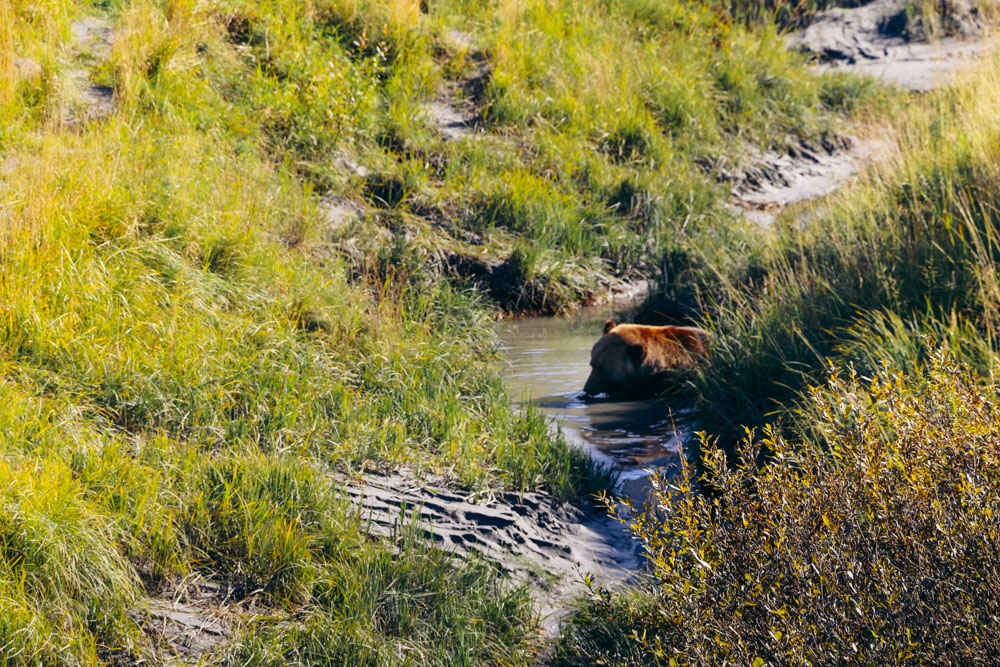
10. Use Binoculars and Telephoto Lens to Get a Closer Look at Bears
Seeing a bear in the wild is a dream come true, especially for wildlife photographers. But protecting yourself from any unexpected attacks and any other surprises the bears might pose is even more important. So instead of running into the beast’s paws, admire the animals from afar, with binoculars.
For landscape and wildlife photographers, encountering the bears is not only a matter of safety and protection, but also capturing vivid images of the animals. The close-up shots of the bears in their natural habitat really look amazing.
Yet there’s no need to be picture-stupid. What’s the point of capturing the best image of a galloping toward you bear and not being able to protect yourself after that. Use a telephoto lens that not only allows you to capture every claw on the bear’s paw, but also stay safe while photographing the wildlife.
And although it’s an old story, I feel like I must repeat it here once again. Please, no selfies with the animals. Think, “Protect yourself first, take pictures of the bears later.”
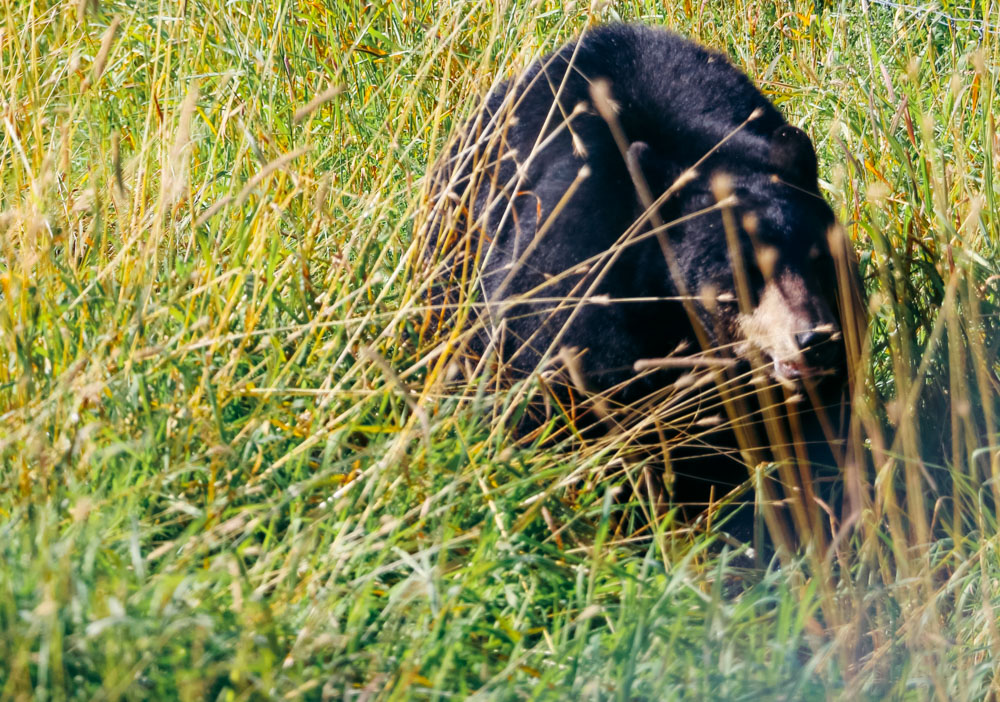
11. Do Like Bears Do: Stand Your Ground to Protect Yourself
Even if you follow all the above tips on how to protect yourself in the wild, the bears can still surprise you. Not from a distance where you can admire them before resuming your hike or drive, but a few feet away from you. If this happens, do not run.
Remember that trick you learned at age 8 when your neighbor’s dog chased you, ready to dig its sharp canines into your leg? Face the animal and never run! The bears are not even wolves and have far fewer resemblances to the dogs. But like the latter, they are excellent runners. Thus, to protect yourself from the powerful claws of the wild bears, stand your ground.
The black bears and especially grizzlies might look clumsy, but they are as fast as racehorses. When dealing with a wild animal face to face, even a scream or sudden movement may invigorate the danger, jeopardizing your safety and chances of survival.
Instead, talk to the bear in low tones and slowly wave your arms. (The latter tip, however, has collected a whole lot of controversial opinions. According to some wildlife experts, this so-called myth is of little help when you face the immediate danger and have to protect yourself from the bears on spot.)
If the mammal doesn’t move, try to walk away slowly, keeping your eyes on the animal. Often, even waiting until the bears get bored and sneak away is the slowest, but surest way to protect yourself in the wild.
12. Don’t Climb Trees
Ignore your adrenaline rush and stop panicking. Climbing a tree while standing in front of the bear is a bad idea. You not only put yourself in danger, but trigger aggression. Both grizzlies and black bears can climb trees after all. And they do it exceptionally well. Instead, try to protect yourself from the bears by standing your ground and, if it’s possible, safely moving away.
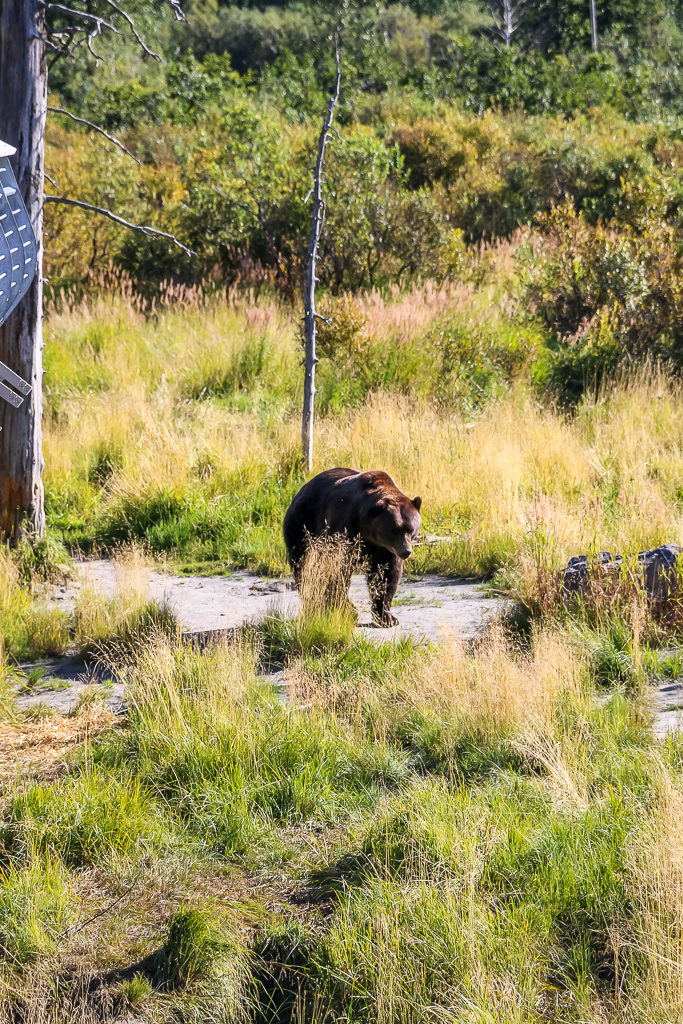
HOW TO PROTECT YOURSELF FROM BEARS: WHAT TO DO WHEN ANIMALS ATTACK
13. Use Bear Spray
Can the bear spray protect you from the bears? The answers differ. Some insist that the bear spray is the only deterrent you need when going to the bear country. Others, while partially agree with the first group, don’t put all their hopes and rely solely on the spray bottle to protect themselves from the bears.
Yet although the bear spray indeed may fail you, probabilities of it keeping you safe are still high.
The spray is, however, not a repellent. Don’t disperse the pepper liquid around you, like you would with bug spray, in hopes of keeping the bears away. The bear spray doesn’t work like that. Simply having this pungent smell on your clothes and equipment doesn’t protect you from the bears.
What can save your life is to disperse the pepper spray into the bear’s eyes when the beast approaches you about 30 feet and tries to attack.
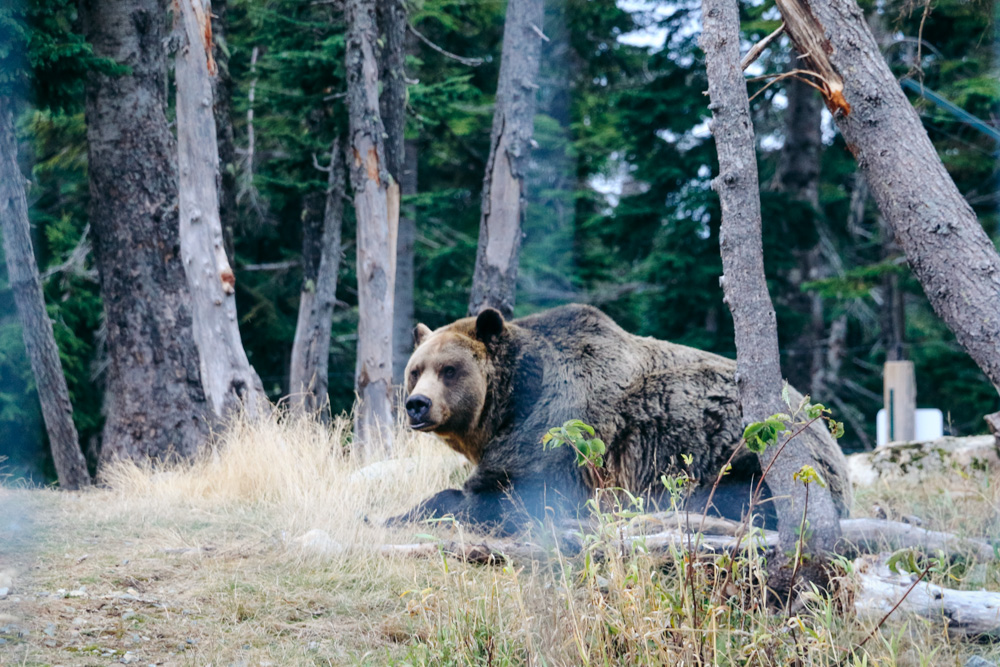
14. Always Try to Protect Yourself, but Never Try to Fool Bears
Pretending being dead is by far one of the most common myths when it comes to protecting yourself from the bears in the wild. Ok, to give this tip its due credit, it might work. But only with grizzlies and only when the bear knocks you down.
In this case, stay face down. Spread your legs to make it harder for the bear to turn you over. And most importantly, protect your neck from the bear’s attacks, covering it with clasped hands.
If you carry a backpack, which you probably always should while hiking in bear country, leave it on. Let the bear’s anger fall on your poor “cushion” that can do an amazing job of saving your back. The backpack, however, won’t protect you from the bears completely – let’s just be realistic. Yet it increases your chances of surviving the bear attack tenfold.
Black bears – yes, those that are smaller than the grizzlies – are more dangerous, though. Fooling these species of bears by pretending dead simply doesn’t work. These fearsome creatures are all business and never play. Once they attack, they intend to kill their targets.
So instead of pretending dead, look for any escapes whether it’s in your car or any buildings nearby. Furthermore, use anything you can grab to fight back and keep yourself safer and as far away from any black bears as possible. If fighting with the bear is inevitable, aim your blows at the animal’s face and muzzle. This bear safety rule can literally save your life.
15. Protect Yourself Fiercely, but Don’t Shoot Bears
Who goes hiking in bear country with a gun?
First of all, it’s prohibited to shoot the bears or any other animals in protected areas. Second, instead of protecting yourself from the bears, you put yourself in financial troubles. Many places in the lower 48 states penalize violators for shooting the wild bears. Third, deadly harming the bears may not protect you after all. Instead of keeping you safe, this action can further aggravate the attacking bear.
Use the bear spray instead. Surprisingly, the harmless (to the animals) pepper spray is more effective than the other methods when it comes to protecting yourself from the running toward you bears.
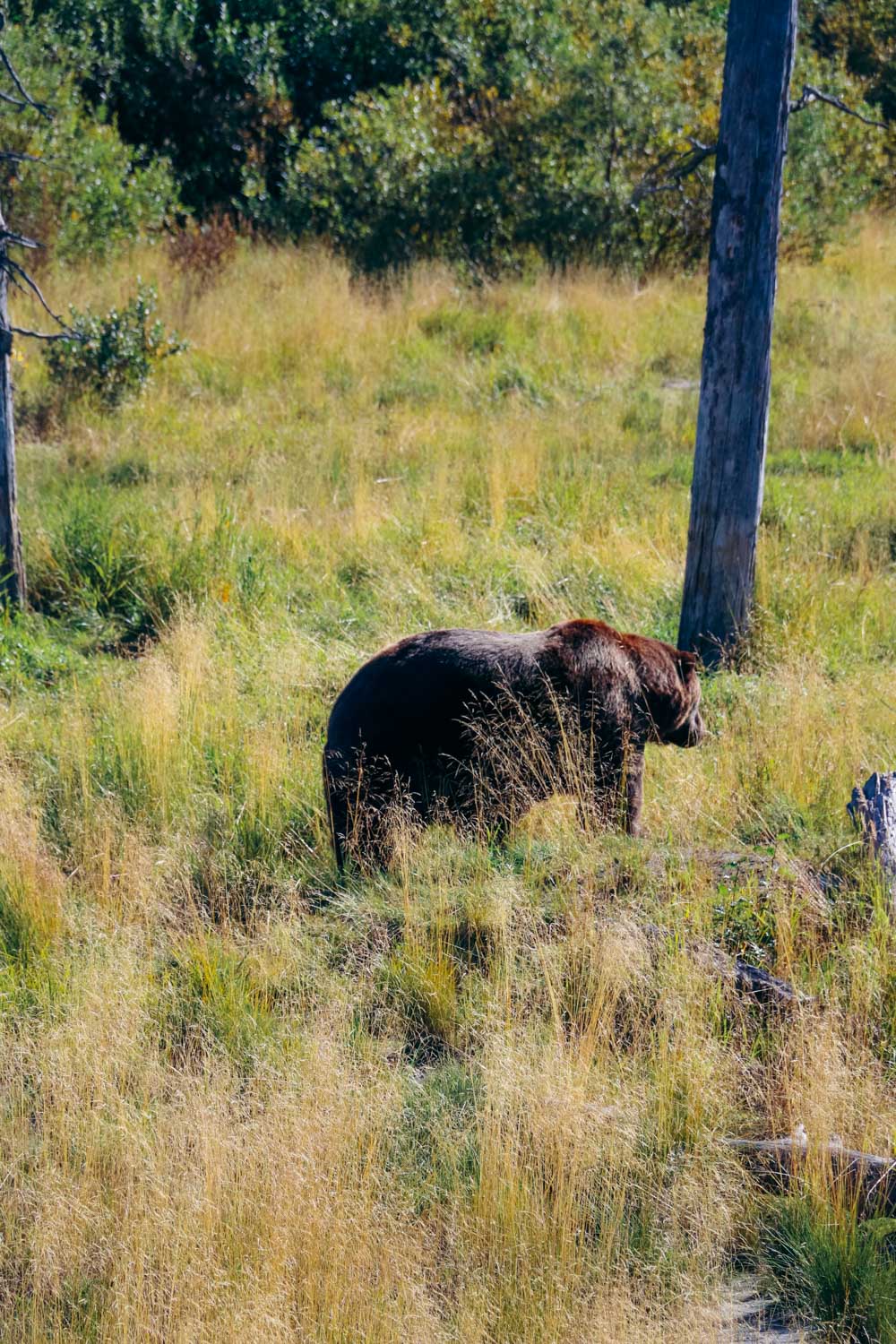
PROTECT YOURSELF FROM BEARS: ANIMAL FACTS
Although the above tips will keep you safe and, to some degree, help you protect yourself from all kinds of bears, you need to be able to distinguish between the grizzlies and their black relatives. As you saw earlier, it’s especially handy in those cases when a bear attacks. All bear species have a few distinctive features. Familiarize yourself with them to protect yourself from any unexpected encounters while hiking in the wild.
Grizzlies
It’s rare to encounter wild grizzlies, animals that have been hunted and extinguished for years. Today, the places where you need to be especially vigilant about the brown bears are numbered, with Glacier National Park in the lead.
The main distinctive features of the grizzlies are prominent shoulder hump, shorter rounded ears, and dished profile of the face. Larger than their black family members, the grizzlies also have bigger claws, 2 to 4 inches, that are normally light in color.
The bear color, however, might be deceptive and is the last thing to rely on. Normally brown, the grizzlies can have very dark or light coloration.
Black Bears
Black bears are leaner. They ditched the shoulder hump altogether. Their ears, however, are taller. Straight facial profile also indicates that you are dealing with the black bears.
As the name suggests, these species typically wear black “coats”. Brown and cinnamon colors are not uncommon among the black bears, though.
Be very careful around these bears and protect yourself as fearlessly as possible. Again, these animals don’t like to play.
